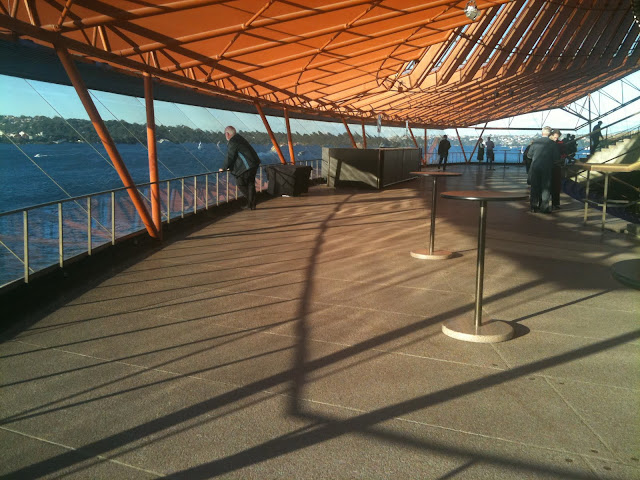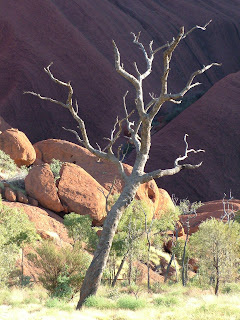 I love Auckland and Auckland loves me, or at least my red hair. On our first day we stumbled across a coffee bar in the centre of town offering love and free coffee to red-heads! What a welcome.
I love Auckland and Auckland loves me, or at least my red hair. On our first day we stumbled across a coffee bar in the centre of town offering love and free coffee to red-heads! What a welcome. I am, however, beginning to wonder about the wisdom of two ageing adrenaline junkies being let loose in New Zealand.
Within 24 hours Nicola and I had located the 300+ metre high communications tower and tourist attraction, Sky Tower. Of course we had to go up to the top for a look and go for a walk, around the outside of the building.
Deliquescence is the action or process of dissolving or becoming liquid. I discovered this word recently. I also discovered what it feels like when ones knees start to deliquesce.
Attired in a bright, jail-orange jumpsuit (not my colour, but staying conscious, not colour coordinated was my objective), I took a deep breath and staring dead ahead I exited the building at the 54th floor onto what seemed like a precariously narrow metal grill, with the ground a very long 192 metres below. Brad, our guide, secured our safety harnesses and we were all set to walk 120 metres around the circumference of the building. However, I seemed to be missing any sensation in my lower legs.
It was thrilling. It was also terrifying as the wind started to pick up. When the end finally came into view there were groans of disappointment from our fellow thrill-seekers. My overwhelming feeling was one of relief.
 Standing on top of the Sky Tower, the 360 degree view made this deceptively big city look like a lego landscape; green volcanic cones, huge bank-initialled rectangular blocks towering above a layer of diverse civic and residential buildings sitting on long fingers of land stretching into the water.
Standing on top of the Sky Tower, the 360 degree view made this deceptively big city look like a lego landscape; green volcanic cones, huge bank-initialled rectangular blocks towering above a layer of diverse civic and residential buildings sitting on long fingers of land stretching into the water.Later we had another close up view of the Sky Tower, this time as an ice sculpture in Auckland's ice-bar. Basically a huge freezer, we paid to go in and sit on ice seats, admire ice sculptures and drink expensive cocktails out of glasses made from, you guessed it, ice. You'll have to take my word for it however, as patrons are not allowed to take pictures. Maybe it was the adrenaline from earlier in the day or maybe it was the relief of getting out of -5 degrees but we danced away the night in the bar next door until the wee hours.
With a million sails bobbing along in the late afternoon sun (as seen from our balcony of our amazing apartment) it's easy to see why Auckland is called the City of Sails. The following day, one of those sails was billowing above our heads as we sailed out beyond Auckland Harbour Bridge on the Pride of Auckland.
We all got a go at the helm and despite the best attempts of one fellow novice sailors we didn't capsize. We did come mighty close to getting wet however with a good wind and a heel of about 40 degrees at times. It was thrilling to feel the power of the wind in those mighty sails pulling on the helm in my hands.
 Taking a break from adrenaline-fuelled activities we headed to the Museum for a quiet afternoon. The very realistic simulated volcano eruption put an end to that, as did the very vibrant Maori cultural experience.
Taking a break from adrenaline-fuelled activities we headed to the Museum for a quiet afternoon. The very realistic simulated volcano eruption put an end to that, as did the very vibrant Maori cultural experience. We have three more days in a great apartment in a great city. Let's see what else we can get up.









































































